Historical Clothing Traditions in Egypt
Egyptian clothing traditions are a rich tapestry of history, culture, and symbolism that reflect the diverse influences over millennia. From ancient pharaohs to modern-day dress, traditional Egyptian attire offers a glimpse into the country’s tumultuous past and vibrant cultural identity. These garments often incorporate intricate designs, vibrant colors, and specific fabrics that hold cultural significance, showcasing Egypt’s unique heritage and artistic expression.
Ancient Egyptian Garments
Ancient Egyptian clothing was characterized by its simplicity, functionality, and symbolic significance, reflecting the social status and roles of individuals in society. Wardrobes consisted mainly of linen garments, which were ideal for Egypt’s hot climate. These garments often included kilts, dresses, and cloaks, adorned with decorative elements such as beads and embroidery that indicated class and profession. The clothing styles evolved over time, influenced by changing dynasties and cultural exchanges, yet the emphasis on lightweight, breathable fabrics remained consistent.
- Men typically wore a loincloth or kilt called a shendyt, often paired with a collar or necklace for the nobility.
- Women wore long, pleated dresses known as kalasiris, which could be decorated with jewelry and sashes.
- Pharaohs and high officials often dressed in elaborate costumes made of fine linen with gold and precious stones, symbolizing their divine status.
- Headdresses, such as the nemes headcloth worn by pharaohs, and elaborate wigs were common among royals and priests.
- Clothing was also used to signify rank, with royal and elite garments featuring intricate patterns and luxurious materials.
- Common people wore simpler, more practical clothing suitable for daily work and survival in the desert environment.
- Funerary attire, including linen shrouds and elaborate jewelry, played an important role in burial customs, emphasizing the importance of the afterlife.
Medieval and Ottoman Influence
Historical clothing traditions in Egypt have been shaped by a rich tapestry of cultural influences, notably from medieval periods and the Ottoman Empire. During the medieval era, Egyptian attire often featured flowing garments made from linen and wool, designed for comfort in the hot climate. Men typically wore tunics and loose trousers, while women favored long dresses and veils that covered the head and shoulders. The influence of Islamic culture was prominent, emphasizing modesty and intricate embroidery. With the advent of the Ottoman Empire in the 16th century, Egyptian clothing integrated Ottoman elements, leading to more elaborate styles. Ottoman influence introduced ornate fabrics, detailed patterns, and accessories such as turbans, sashes, and jewelry. The clothing became more diverse, combining traditional Egyptian silhouettes with Ottoman aesthetics, reflecting a blend of local and imperial styles. This historical interplay resulted in distinctive clothing traditions that continue to influence Egyptian fashion and cultural identity today.
Traditional Attire in Rural Egypt
Historical clothing traditions in Egypt reflect a rich cultural heritage that has evolved over thousands of years, blending ancient customs with influences from various civilizations such as the Greeks, Romans, and Arabs. Traditionally, Egyptian attire was designed to accommodate the hot climate, using lightweight fabrics and simple, flowing styles. Men often wore long tunics called jalabiya, while women donned long dresses or robes, frequently adorned with intricate embroidery and accessories that signified social status and regional identity.
In rural Egypt, traditional attire remains an important aspect of cultural identity and daily life. Rural men typically wear loose-fitting garments such as the galabeya, a long, comfortable robe made from cotton or linen, suitable for agricultural activities. Rural women often wear similarly practical clothing, with dresses or robes complemented by headscarves, especially on special occasions or religious events. These garments are often decorated with traditional patterns and embroidery, preserving the craftsmanship handed down through generations. The clothing in rural areas symbolizes a connection to heritage, community, and the agrarian lifestyle that continues to thrive in many parts of Egypt today.
Modern Clothing Styles in Egypt
Modern clothing styles in Egypt blend traditional elements with contemporary fashion trends, reflecting the country’s rich cultural heritage and evolving urban lifestyle. Egyptian fashion seamlessly incorporates vibrant colors, intricate patterns, and modern cuts, making it a unique expression of identity and style. From bustling Cairo streets to trendy fashion districts, modern clothing in Egypt showcases both innovation and respect for cultural roots.
Urban Fashion Trends
Modern clothing styles in Egypt reflect a dynamic blend of traditional influences and contemporary urban fashion trends. In cities like Cairo and Alexandria, young Egyptians are embracing a diverse range of styles that showcase individuality and global cultural exchange. Urban fashion trends include casual streetwear such as stylish jeans, graphic t-shirts, and sneakers, alongside more sophisticated looks featuring tailored jackets, designer accessories, and innovative layering. The influence of international fashion icons combined with local designers results in a unique fashion scene that balances modesty with modernity. Cultural fusion is evident in the incorporation of traditional Egyptian elements, like embroidery or patterns, into contemporary outfits. Overall, Egypt’s urban fashion scene is vibrant, diverse, and constantly evolving to mirror the country’s youthful energy and global connectivity.
Influence of Western Fashion
Modern clothing styles in Egypt reflect a blend of traditional Egyptian culture and contemporary Western fashion influences. This fusion creates a unique fashion landscape where local customs meet global trends, resulting in diverse and expressive clothing choices for both men and women.
Western fashion has significantly influenced Egyptian clothing, especially among youth and urban populations. This influence is evident in casual wear such as jeans, t-shirts, and sneakers, which are now common in Egyptian cities. Additionally, international brands and fashion designers have gained popularity, providing a wide range of stylish options that appeal to the modern Egyptian consumer.
- Introduction of Western-style clothing like suits, dresses, and accessories in urban areas
- Greater visibility of Western fashion brands and retail stores across Egypt
- Influence of Western media and celebrities on local fashion choices
- Adoption of casual and streetwear styles among Egyptian youth
- Integration of Western design elements into traditional clothing for a contemporary look
Dress Codes and Cultural Norms
Modern clothing styles in Egypt seamlessly blend traditional influences with contemporary fashion, reflecting the country’s rich cultural heritage and evolving urban trends. In major cities like Cairo and Alexandria, people often wear stylish Western attire such as jeans, t-shirts, and dresses, especially among the younger population. However, modest dressing remains important in many settings, with women sometimes choosing long skirts, loose-fitting tops, and headscarves depending on the cultural or religious context.
Dress codes and cultural norms in Egypt emphasize modesty, particularly in religious or rural areas. Women are generally advised to wear clothing that covers the shoulders and knees when visiting mosques, churches, or rural communities. It is common to see women wearing headscarves or hijabs, although this is not mandatory for all women or in all contexts. Men tend to dress in long trousers and shirts, especially in traditional or formal settings.
Respect for cultural norms also extends to avoiding overly revealing clothing in public spaces. While Western-style fashion is widely embraced in urban areas, selecting modest attire is often respectful and aligns with local customs. Overall, dressing appropriately in Egypt involves balancing modern fashion trends with an awareness of cultural and religious sensitivities, ensuring respectful and comfortable attire for various occasions and settings.
Traditional Egyptian Clothing Items
Traditional Egyptian clothing reflects the rich cultural heritage and history of Egypt, showcasing unique styles and fabrics that have been passed down through generations. These garments often incorporate vibrant colors, intricate embroidery, and distinctive accessories that symbolize various aspects of Egyptian identity and tradition. From ancient times to the modern era, Egyptian clothing continues to celebrate the country’s diverse cultural legacy.
Galabeya (Thobe)
Traditional Egyptian clothing encompasses a rich cultural heritage, with the Galabeya (also known as Thobe) being one of the most iconic garments. This loose, long robe is commonly worn by men and women across Egypt, especially in rural areas and during special occasions. Made from light fabrics such as cotton or linen, the Galabeya is designed to provide comfort in the hot Egyptian climate while reflecting local customs and traditions. It often features intricate embroidery, colorful patterns, and decorative stitching that highlight regional styles and craftsmanship. Whether worn casually or formally, the Galabeya remains a symbol of Egyptian identity and cultural pride, representing a blend of practicality and aesthetic appeal in traditional Egyptian attire.
Kaftan and Djellaba
Traditional Egyptian clothing reflects the rich cultural heritage and history of the region, blending ancient customs with modern influences. Among the notable garments are the kaftan and the djellaba, both of which are essential in Egyptian attire and are appreciated for their elegance and comfort.
The kaftan is a long, flowing robe that is often elaborately decorated with embroidery, beads, or other embellishments. It is traditionally worn by both men and women during special occasions and festivals, symbolizing status and cultural identity. The fabric choices vary from lightweight silks to more substantial textiles suitable for the desert climate, making the kaftan versatile in different settings.
The djellaba, on the other hand, is a loose, hooded robe commonly associated with North African clothing but also prevalent in Egypt. It features wide sleeves and is typically made from wool or cotton, providing comfort and protection against the elements. The djellaba’s simple yet elegant design makes it suitable for everyday wear as well as formal events, often decorated with geometric patterns or embroidery to add a unique touch.
Hijab and Niqab
Traditional Egyptian clothing reflects the rich cultural history and diverse influences that have shaped the nation over centuries. In everyday life, Egyptians often wear comfortable and modest garments such as the galabeya, a loose-fitting robe traditionally made of cotton or linen. Women may also wear accessories like scarves or hijabs to cover their hair, especially in more conservative settings.
The hijab is a head covering that many Egyptian women choose to wear as a sign of modesty and cultural identity. It covers the hair and sometimes the neck, varying in style and color according to personal preference or local customs. The niqab is a more concealing form of dress which covers the face except for the eyes and is worn by some women seeking to adhere to particular interpretations of modesty. Both clothing items are prominent in Egyptian society and symbolize cultural and religious traditions, especially in rural areas and conservative communities.
Contemporary Fashion and Designers
Contemporary fashion in Egypt reflects a dynamic blend of tradition and modernity, showcasing the creativity of local designers who incorporate cultural elements into their innovative styles. Egyptian designers are gaining international recognition for their unique interpretations of fashion, blending ancient motifs with contemporary trends to create distinctive clothing that resonates with both local and global audiences. This vibrant fashion scene highlights the diverse tastes and artistic expressions that characterize Egypt’s evolving apparel industry.
Notable Egyptian Fashion Designers
Contemporary fashion in Egypt reflects a vibrant blend of traditional elements and modern design, showcasing the country’s rich cultural heritage through innovative styles. Egyptian fashion designers are gaining international recognition for their ability to merge historic motifs with contemporary aesthetics, creating unique clothing that resonates both locally and globally. These designers often incorporate traditional embroidery, fabrics, and motifs into their collections, catering to diverse tastes from modest fashion to high couture.
Notable Egyptian fashion designers include Alexandra Ruiu, known for her elegant and modern approach to traditional garments, and Mohanad Kojok, who combines contemporary fashion with Egyptian cultural symbols. Dalia Mady is celebrated for her innovative use of textiles and vibrant patterns that honor Egypt’s artistic legacy. These designers, among others, play an essential role in shaping Egypt’s fashion scene and promoting the country’s fashion industry on the world stage, emphasizing clothing that celebrates Egypt’s unique cultural identity.
Fashion Weeks and Events
Contemporary fashion for Egypt reflects a blend of modern styles and traditional elements, highlighting the country’s rich cultural heritage while embracing global trends. Designers often incorporate local textiles, symbols, and craftsmanship to create clothing that resonates with Egyptian identity and identity while appealing to international markets.
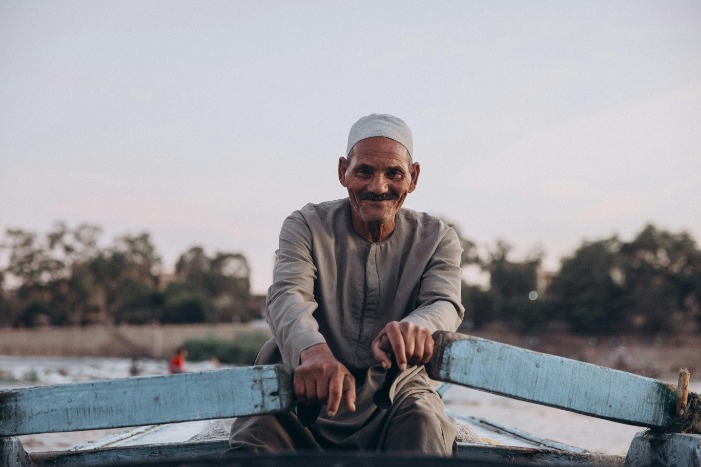
Fashion weeks and events play a significant role in showcasing this diversity, with Cairo Fashion Week and Egypt Fashion Week providing platforms for emerging and established designers to present their collections. These events attract industry professionals from around the world and emphasize Egypt’s growing influence in the global fashion scene.
Additionally, contemporary Egyptian designers emphasize sustainable practices and innovative designs, often inspired by Egypt’s history, landscapes, and urban life. The clothing for Egypt’s modern population balances functionality, tradition, and style, making it suitable for various occasions from everyday wear to formal events, all while honoring Egypt’s cultural roots.
Popular Egyptian Clothing Brands
Contemporary fashion in Egypt is a dynamic blend of traditional influences and modern trends, reflecting the country’s rich cultural heritage and evolving global style. Egyptian designers are gaining international recognition for their innovative approaches, combining local craftsmanship with fresh, contemporary aesthetics. Popular Egyptian clothing brands such as Okhtein, a luxury accessories brand known for its distinctive handbags, and Alexandria’s Mounara, which offers chic, modern apparel, embody this fusion of tradition and modernity. Other notable brands include Abraj, which focuses on streetwear and casual wear for young Egyptians, and Soha Bro, known for incorporating traditional patterns into contemporary clothing. These brands not only cater to local tastes but also appeal to international markets, helping to showcase Egypt’s vibrant fashion scene worldwide.
Clothing for Special Occasions and Festivals
Clothing for special occasions and festivals in Egypt reflects a rich blend of tradition, culture, and modern style. During celebrations such as weddings, religious festivals, and national holidays, Egyptians often dress in vibrant, ornate garments that showcase their heritage. These special outfits not only celebrate cultural identity but also add a sense of elegance and festivity to the events, making them a memorable part of Egypt’s vibrant social life.
Wedding Attire
Clothing for special occasions and festivals in Egypt reflects a rich blend of tradition and contemporary fashion, showcasing the country’s vibrant culture. During festivals such as Ramadan and Eid, people often wear elegant garments that highlight intricate embroidery and luxurious fabrics. Wedding attire in Egypt is particularly elaborate, with brides commonly donning ornate dresses called “takhsheela” or “abaya,” embellished with gold thread, beads, and sequins. Grooms typically wear traditional galabeya or modern suits, sometimes complemented by accessories like turbans or ceremonial sashes. These attires not only symbolize cultural heritage but also emphasize the importance of celebration and community in Egyptian society.
Religious Festivals
Clothing for special occasions and religious festivals in Egypt reflects a rich blend of tradition and cultural heritage, showcasing both modesty and elegance. During religious festivals such as Eid or Ramadan celebrations, Egyptians often wear traditional garments like the intricate kaftans, galabeyas, and embroidered dresses that highlight vibrant colors and detailed craftsmanship. Men typically don long, flowing robes called galabeyas, while women may choose elaborately decorated dresses or abayas that feature exquisite embroidery or beadwork. For occasions like weddings or festivals, many opt for adorned jewelry and accessories to complement their outfits. These clothes not only serve as expressions of cultural pride but also preserve longstanding customs, making each celebration a showcase of Egypt’s diverse and historic clothing traditions.
National Celebrations
Egyptian clothing for special occasions and festivals reflects a rich blend of traditional and modern styles, often showcasing vibrant colors, intricate embroidery, and cultural symbolism. During national celebrations such as Independence Day or religious festivals like Eid, people dress in their finest attire to honor the event and display national pride. Men might wear tailored galabiyas or suits, often decorated with embroidery, while women frequently opt for beautifully embellished dresses, such as kaftans or abayas, adorned with beads, sequins, and gold accents. Traditional clothing pieces are complemented by accessories like jewelry, headpieces, and scarves, highlighting Egypt’s cultural heritage. In addition, modern fashion influences are also visible, as many choose contemporary styles that incorporate traditional motifs, creating a unique blend that celebrates Egypt’s history and evolving identity during festive occasions.
Climate and Practical Clothing Choices
When selecting clothing for Egypt, understanding the country’s climate is essential for making practical choices. The hot, sunny days and occasional cooler evenings require thoughtful attire that keeps you comfortable while respecting local conditions. Choosing suitable clothing not only enhances your experience but also helps you stay protected from the sun and heat. This guide explores practical clothing options for navigating Egypt’s diverse climate effectively.
Lightweight Fabrics for Hot Weather
When selecting clothing for Egypt’s hot climate, choosing lightweight fabrics is essential to stay comfortable and cool. Natural materials like cotton, linen, and bamboo are excellent options because they are breathable and help wick away sweat, keeping the body dry. Light-colored clothing also reflects sunlight rather than absorbing it, which can significantly reduce heat absorption and help keep you cooler throughout the day.
Opting for loose-fitting garments made from these lightweight fabrics allows air to circulate around the body, providing additional cooling benefits. Long sleeves and trousers made of breathable materials can offer protection from the sun while still maintaining comfort. Additionally, wide-brimmed hats and sunglasses are practical accessories that complement lightweight clothing and help shield against intense sunlight, making outdoor activities in Egypt more enjoyable and safer.
Cooling Accessories
When choosing clothing for Egypt’s hot climate, it is essential to prioritize breathable and lightweight materials such as cotton and linen to stay comfortable and cool throughout the day. Loose-fitting garments help promote air circulation, reducing heat retention and sweat build-up. Covering shoulders and knees with modest, yet airy clothing also provides protection from direct sunlight and helps prevent sunburn while respecting local customs. Adding a wide-brimmed hat or a lightweight scarf can further shield your face and neck from intense sun exposure.
Complementing your clothing, practical cooling accessories are invaluable. Wearing sunglasses with UV protection can shield your eyes from harsh sunlight, while handheld or wearable fans can offer instant relief in the heat. Reusable cooling towels that can be soaked in water and draped around your neck help lower body temperature naturally. Staying hydrated with bottled water and keeping a portable mist spray handy can also enhance comfort during outdoor activities. Combining these clothing choices with cooling accessories ensures a more pleasant experience exploring Egypt’s historical sites and vibrant markets.
Layering for Cooler Seasons
When choosing clothing for Egypt during cooler seasons, practical layering becomes essential due to the fluctuating temperatures between daytime warmth and evening chill. Light, breathable fabrics such as cotton and linen are ideal for daytime to keep comfortable in the heat, while adding layers like sweaters or light jackets can prepare you for the cooler evenings. It’s advisable to start with a moisture-wicking base layer to absorb sweat, then incorporate insulating layers to retain warmth. Scarves and shawls can also serve a dual purpose, providing coverage from the sun during the day and extra warmth when temperatures drop. Adapting your clothing choices through layering ensures comfort and protection as you explore Egypt’s diverse climates and cultural sites.

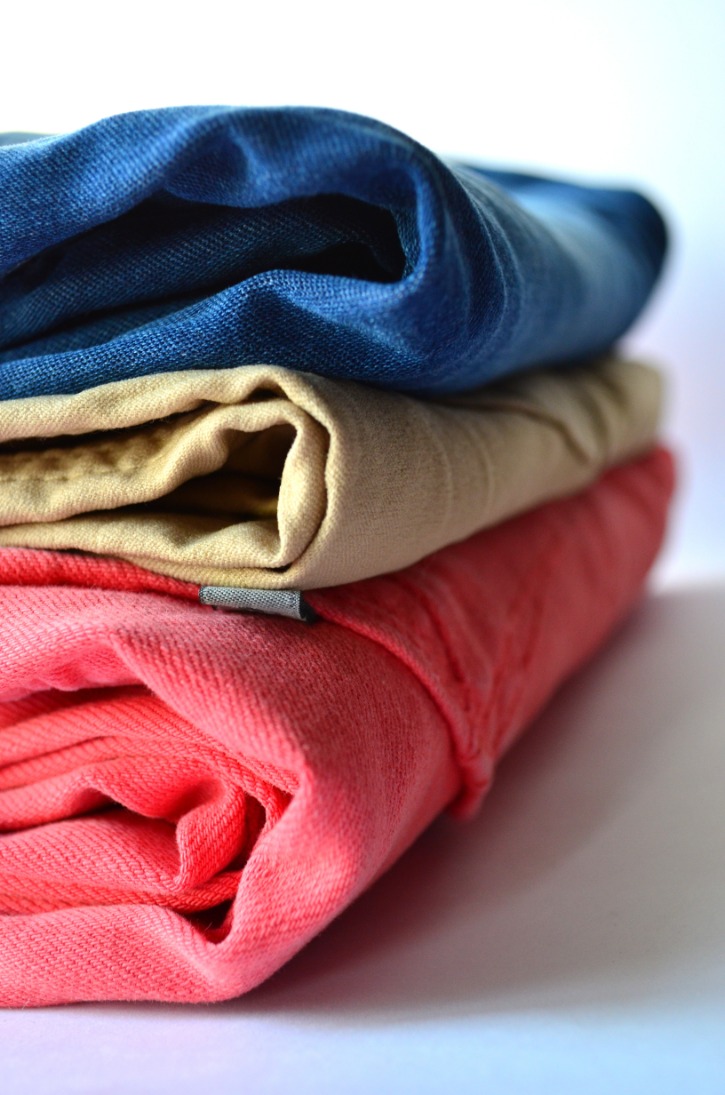
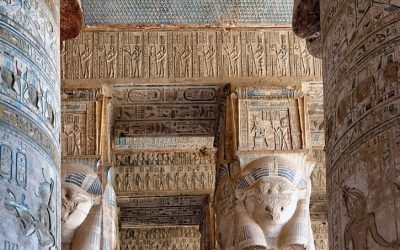
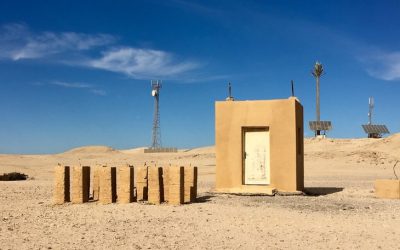
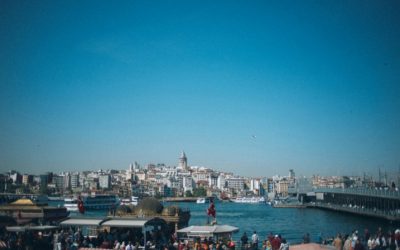
0 Comments